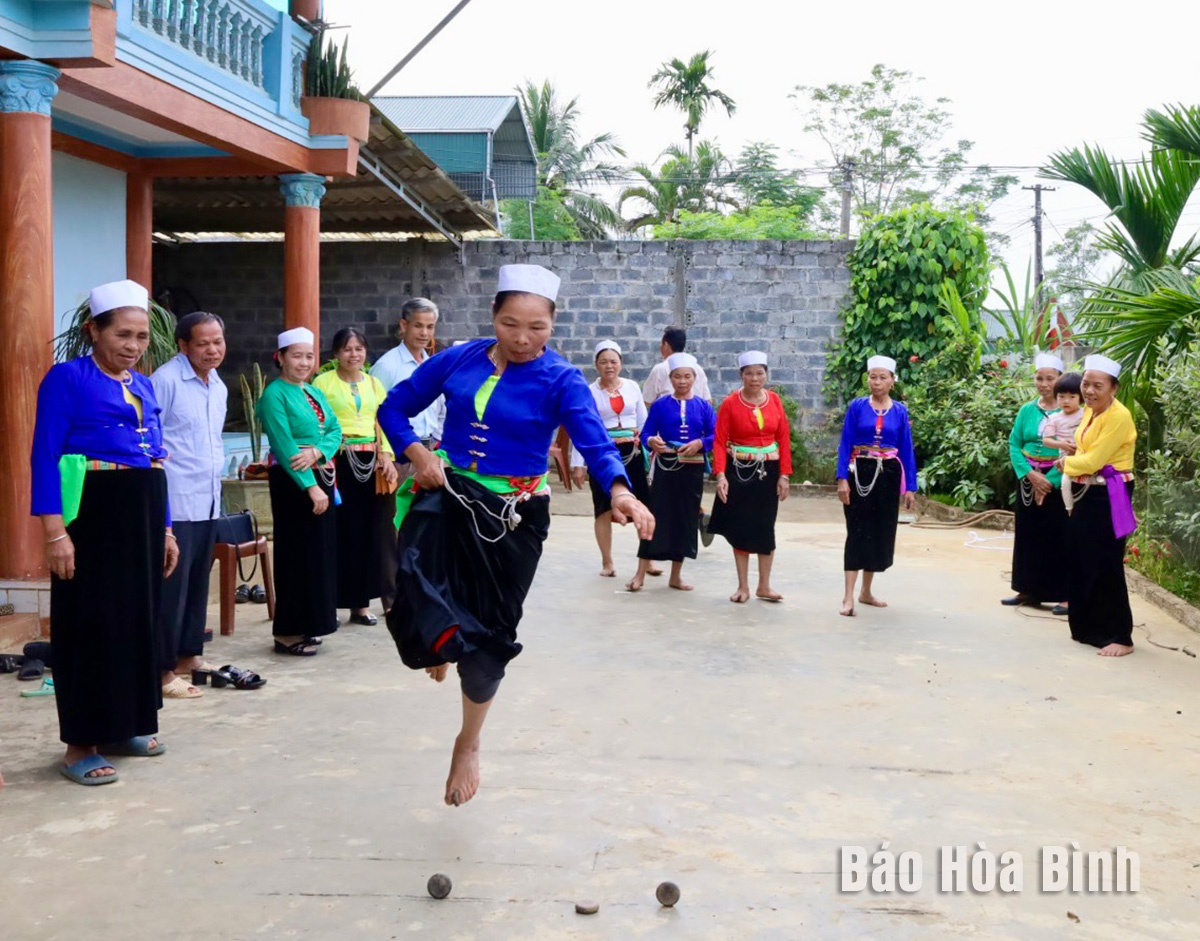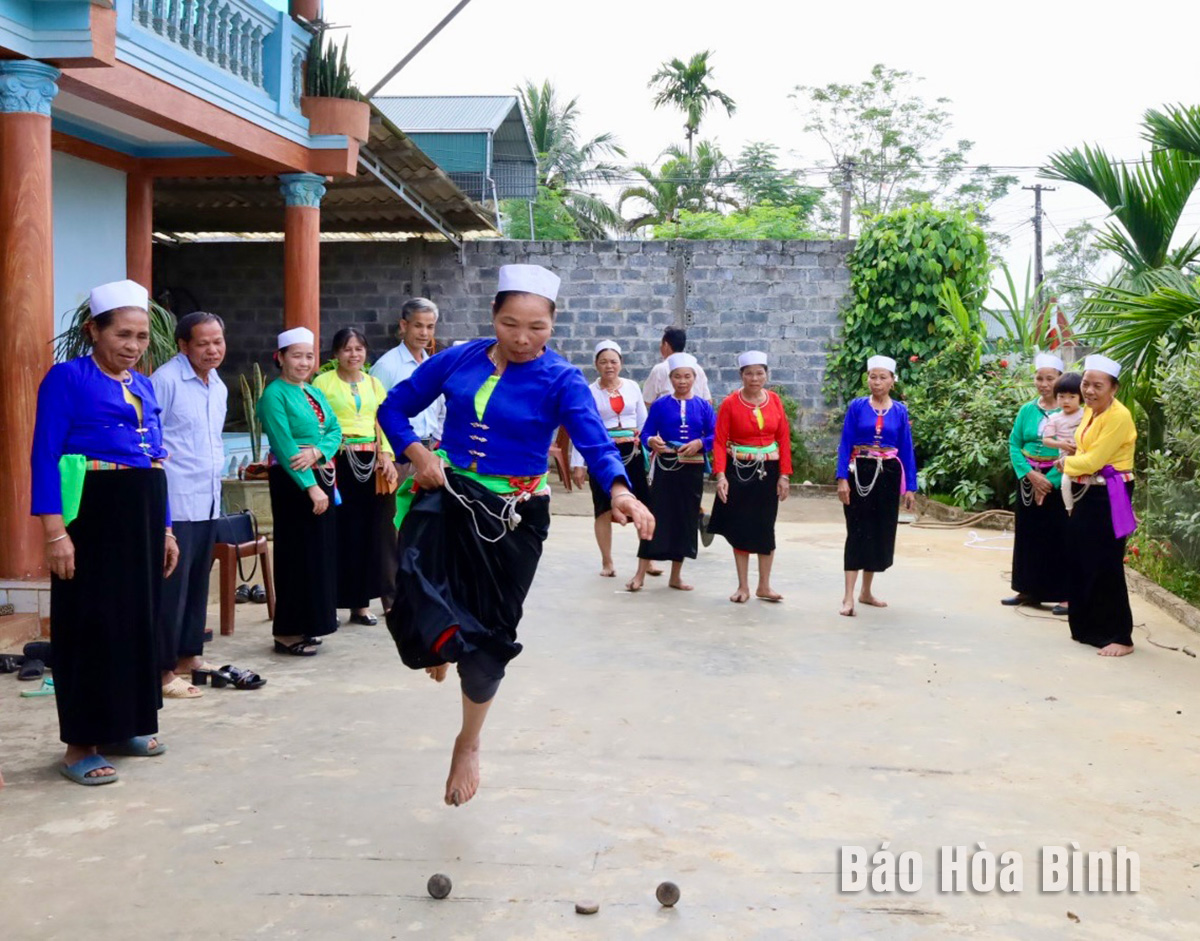



Muong ethnic people in Tan My commune, Lac Son district, playing "danh mang” folk game.
Over the recent years, nine traditional festivals in Vu Ban town and Ngoc Lau, An Nghia, Van Son, Nhan Nghia, Vu Binh, and Yen Phu communes have been revived, and various clubs established to preserve local folk songs and dances.
The district arranges classes to teach the young generation to play Muong gong and sing folk songs, and provides accessories and costumes for art teams and members of the Mo Muong (folk performing genre in rituals) clubs under a project on preserving and promoting traditional cultural values of ethnic minority groups in tandem with developing tourism.
Besides, it has digitalised information on five local historical and cultural relic sites, namely Muong Khoi war zone revolutionary historical relic site, Khoi communal house in An Nghia commune, Coi communal house in Vu Binh commune, Tay Tien Regiment 52 relic site in Thuong Coc commune, and Khenh communal house in Van Son commune. The district has organised sport competitions and cultural exchanges to maintain the Muong ethnic group’s traditional and folk games.
To date, Lac Son has completed the upgrade, renovation and embellishment of the Muong Khoi war zone national relic site with some 8 billion VND (over 318,000 USD). It is working to complete a dossier asking for the provincial People’s Committee’s approval for renovation projects for Khu Dung cave in Nhan Nghia commune, Bang communal house in Ngoc Lau commune, and the anti-Japan Truong Son guerrilla class in Tan My commune.
Most recently, Trai hamlet cave in Tan Lap commune, and Vanh village stone cliff in Yen Phu commune have been recognised as special national historical cultural relic sites.
Head of the district’s culture and sports office Nguyen The Hung said the district has worked closely with the provincial Department of Culture, Sports and Tourism to build a pre-historical culture museum in Tan Lap commune, and studied and proposed the construction of a Muong ethnic cultural space in Yen Phu commune.